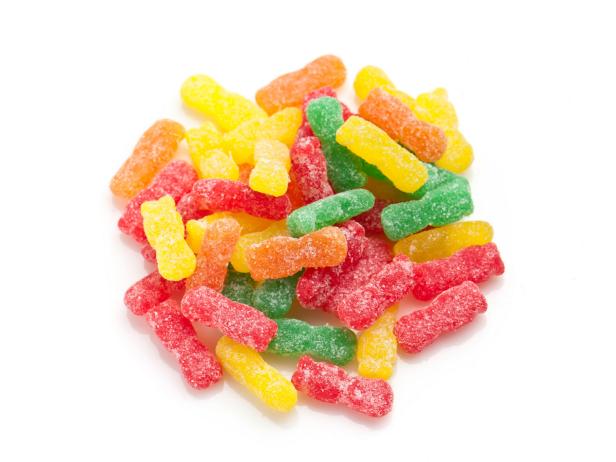Artificial Food Coloring: Good or Bad?
Sure, artificial food coloring makes food look more appealing, but they also contain plenty of chemicals. Are they safe? Learn more about what these food additives are made of and where to find (and avoid) them.
By:
Dana Angelo White, M.S., R.D., A.T.C.
Juanmonino
Sure, artificial food colorings make foods look brighter and more appealing, but at what cost? Consumer watchdog CSPI says food dyes can cause everything from hyperactivity and allergic reactions to cancer, and is
calling for the government to ban three of the most common dyes. Here's our take on the rainbow-colored additives.
Where are artificial colors used?
Bright candy and breakfast cereals are obvious culprits, but check the ingredient lists on your favorite candy and baked goods. Chances are, you’ll find artificial colorings like “Yellow 5” and “Blue 1.” Companies also put these dyes in soda and other beverages, gelatin desserts, even pet food and some meat products (hot dogs, sausages, etc.)! And they don’t just use one. Finding two or more of these artificial dyes in a single product is not uncommon.
What are the risks?
To start off, many food colorings just haven’t been tested enough to determine the long-term dangers. We’re not talking about ingesting small amounts, either. Consumption of food dyes has increased
500 percent in the past 50 years! As for the dyes that
have been tested, studies have come back inconclusive -- but some have shown links to certain types of cancers.
Other studies -- more than 30 years’ worth of research, according to The Center for Science in the Public Interest -- link food colorings to
hyperactivity and behavior problems in children. The Center wants the FDA to ban certain dyes that they say cause these issues. Their petition includes two of the most common, Yellow 5 and Red 40, as well as Blue 1, Blue 2, Green 3, Orange B, Red 3 and Yellow 6.
Internationally, the U.S. is behind other countries on its artificial dye policies. The U.K.’s Food Standards Agency has imposed a
voluntary ban on several of these dyes because of their potential harm. And although they turned down a more widespread ban, the European Parliament agreed to
place warning labels on all European-produced foods containing one of six artificial colorings. One U.S. state has
considered similar bans, but so far all measures have been rejected.
Here are more “highlights” of some research findings on the main colors being used in the food industry today. (Count how many times you see these listed on labels of food you pick up in the supermarket. You might be surprised.)
- Blue 2: linked to brain tumors in mice
- Green 3: linked to bladder cancer back in 1981
- Yellow 3: known to cause some mild allergic reactions – especially in people who are sensitive to aspirin
- Yellow 6: associated with cancer of the adrenal glands and kidneys as well as possible allergic reactions
- Red 3: was considered for banning in 1983 because of a possible link to thyroid tumors
Bottom Line: A small number of studies might not create fact, but why risk it? Artificial colors are found mostly in processed junk foods, which are high in calories and low in nutrients. Avoiding food dyes is just one of the benefits of choosing high-nutrient, whole foods instead.
TELL US: Do you check labels for artificial food colorings before buying a product?
Dana Angelo White, MS, RD, ATC, is a registered dietitian, certified athletic trainer and owner of Dana White Nutrition, Inc., which specializes in culinary and sports nutrition. See Dana's full bio »




































